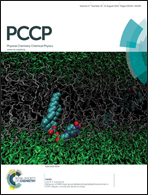Investigation of nitriding and reduction processes in a nanocrystalline iron–ammonia–hydrogen system at 350 °C
Abstract
In this paper, the series of phase transitions occurring during the gaseous nitriding of nanocrystalline iron was studied. The nitriding process of nanocrystalline iron and the reduction process of the obtained nanocrystalline iron nitrides were carried out at 350 °C in a tubular differential reactor equipped with systems for thermogravimetric measurements and analysis of gas phase composition. The samples were reduced with hydrogen at 500 °C in the above mentioned reactor. Then the sample was nitrided at 350 °C in a stream of ammonia–hydrogen mixtures of various nitriding potentials, P = pNH3/pH23/2. At each nitriding potential stationary states were obtained – the nitriding reaction rate is zero and the catalytic ammonia decomposition reaction rate is constant. The reduction process of the obtained nanocrystalline iron nitrides was studied at 350 °C in the stationary states as well. The phase composition of products obtained in both reaction directions (nitriding and reduction) was different despite the identical concentration of nitrogen in the nitriding mixture. The hysteresis phenomenon, occurring at the iron nitriding degree – nitriding potential system, was explained. In the single-phase areas of α-Fe(N), γ′-Fe4N or ε-Fe3–2N, a state of chemical equilibrium between the ammonia–hydrogen mixture, nanocrystalline iron surface and volume was observed. In the multi-phase areas, between the gas phase and the iron surface a state of chemical equilibrium holds, but between the gas phase and solid phase volume a state of quasi-equilibrium exists. The model of the nitriding process of nanocrystalline iron to iron nitride (γ′-Fe4N) was presented. It was found that nanocrystallites reacted in the order of their sizes from the largest to the smallest.


 Please wait while we load your content...
Please wait while we load your content...